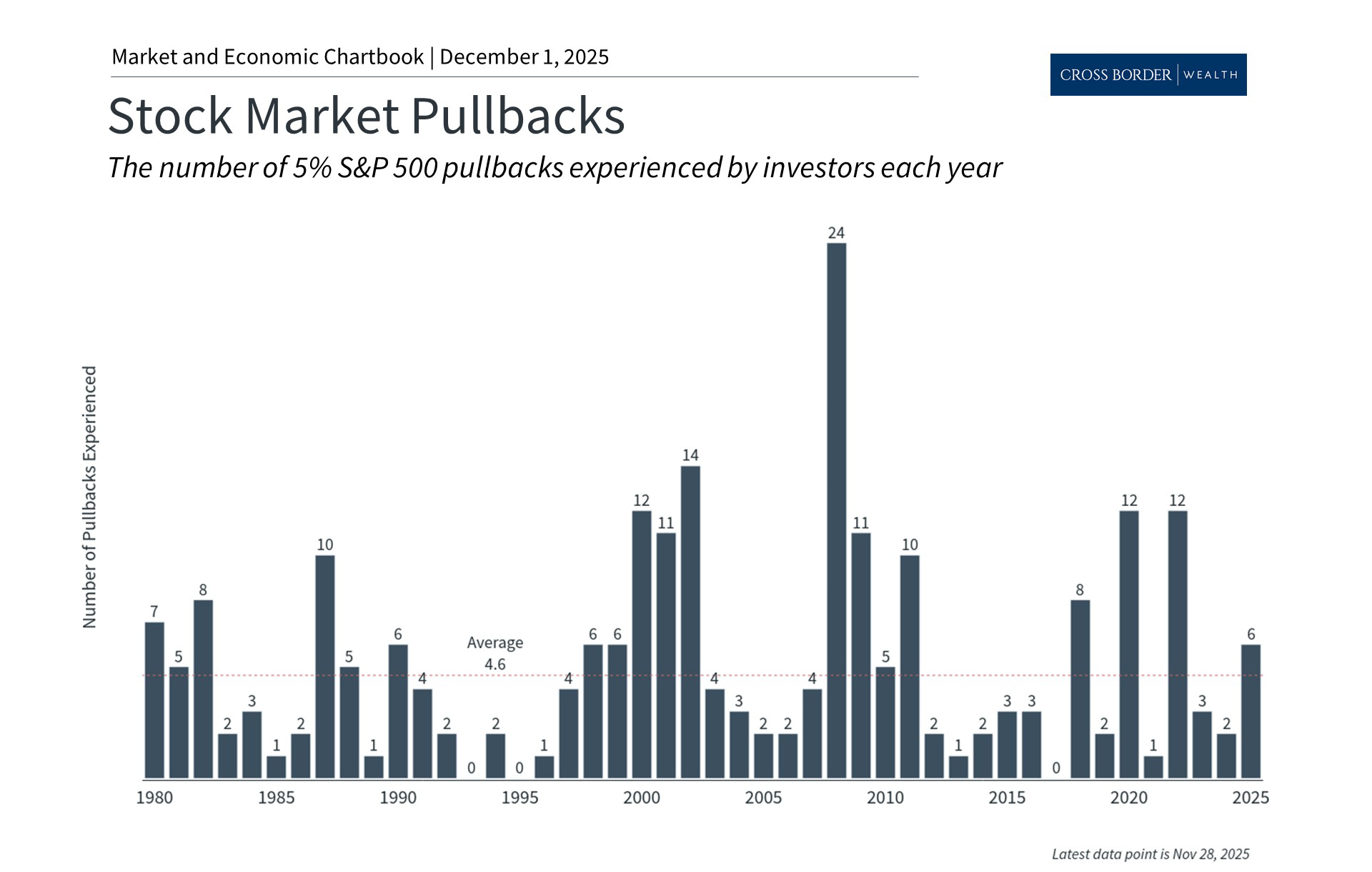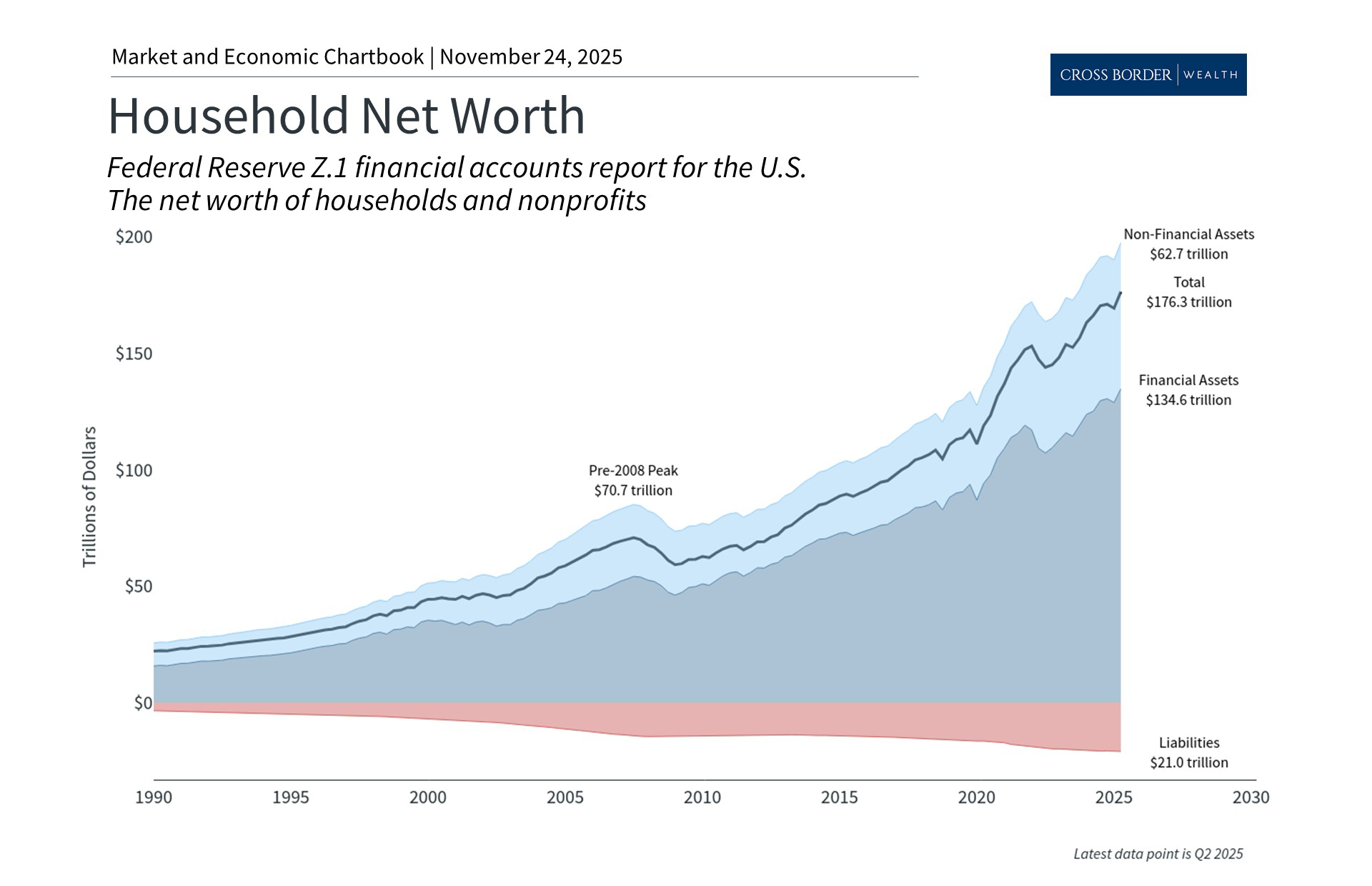Is the U.S. Economy in a Recession?
- Global Wealth Management
- 3 mins
One common definition of a recession is a decrease in real gross domestic product (GDP) for two consecutive quarters, and the current situation meets that criterion. Real (inflation-adjusted) GDP dropped at an annual rate of 1.6% in the first quarter of 2022 and by 0.9% in the second quarter.12 Because GDP is reported on a quarterly basis, the NBER committee cannot use it to measure monthly economic activity, but the committee does look at it for defining recessions more broadly.
Since 1948, the U.S. economy has never experienced two consecutive quarters of negative GDP growth without a recession being declared. However, the current situation could be an exception, due to the strong employment market and some anomalies in the GDP data.13
Negative first-quarter GDP was largely due to a record U.S. trade deficit, as businesses and consumers bought more imported goods to satisfy demand. This was a sign of economic strength rather than weakness. Consumer spending and business investment — the two most important components of GDP — both increased for the quarter.14
Initial second-quarter GDP data showed a strong positive trade balance but slower growth in consumer spending, with an increase in spending on services and a decrease in spending on goods. The biggest negative factors were a slowdown in residential construction and a substantial cutback in growth of business inventories.15 Although inventory reductions can precede a recession, it's too early to tell whether they signal trouble or are simply a return to more appropriate levels.16 Economists may not know whether the economy is contracting until there is additional monthly data.
The Inflation Factor
With employment at such high levels, it may be questionable to characterize the current economic situation as a recession. However, the employment market could change, and recessions can be driven by fear as well as by fundamental economic weakness.
The fear factor is inflation, which ran at an annual rate of 9.1% in June, the highest since 1981.17 Wages have increased, but not enough to make up for the erosion of spending power, making many consumers more cautious despite the strong job market.18 If consumer spending slows significantly, a recession is certainly possible, even if it is not already under way.
Inflation has forced the Federal Reserve to raise interest rates aggressively, with a 0.50% increase in the benchmark federal funds rate in May, followed by 0.75% increases in June and July.19 It takes time for the effect of higher rates to filter through the economy, and it remains to be seen whether there will be a "soft landing" or a more jarring stop that throws the economy into a recession.
No one has a crystal ball, and economists' projections range widely, from a remote chance of a recession to an imminent downturn with a moderate recession in 2023.20 If that turns out to be the case, or if a recession arrives sooner, it's important to remember that recessions are generally short-lived, lasting an average of just 10 months since World War II. By contrast, economic expansions have lasted 64 months.21 To put it simply: The good times typically last longer than the bad.
Projections are based on current conditions, are subject to change, and may not come to pass.
1) Investor's Business Daily, July 12, 2022
2) The Wall Street Journal, July 17, 2022
3–5) National Bureau of Economic Research, 2021
6, 12, 15, 21) U.S. Bureau of Economic Analysis, 2022
7) Reuters, July 15, 2022
8–9, 17–18) U.S. Bureau of Labor Statistics, 2022
10) The Wall Street Journal, July 14, 2022
11) The Wall Street Journal, July 4, 2022
13–14) MarketWatch, July 5, 2022
16) The Wall Street Journal, July 28, 2022
19) Federal Reserve, 2022
20) The New York Times, July 1, 2022
Cross Border Wealth is a SEC-registered investment adviser which may only transact business in those jurisdictions in which it is registered or qualifies for an exemption or exclusion from registration requirements.
Cross Border Wealth may discuss and display charts, graphs, formulas, stock, and sector picks which are not intended to be used by themselves to determine which securities to buy or sell, or when to buy or sell them. This specific information is limited and should not be used on their own to make investment decisions.
All information provided in this article is for educational purposes only and does not intend to make an offer or solicitation for the sale or purchase of any specific securities, investment, or investment strategies. Please ensure to first consult with a qualified financial adviser and or tax professional. Further, please note that while said information has been obtained from known sources which are believed to be reliable, none of these are guaranteed.


